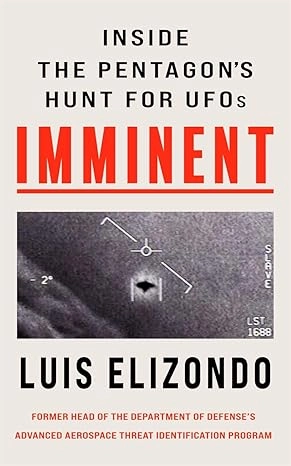Potential Ocean Discovered on Uranus’ Moon Miranda: A Surprising Prospect for Life
Science/Medical/Technology
Saturday 9th, November 2024
5 minute read.
In a surprising finding that could change our understanding of planetary moons, new research suggests Uranus’ moon Miranda may contain a subsurface ocean, positioning it alongside other "ocean worlds" in our solar system. This development suggests that Uranus’s moons, once considered largely frozen and inert, might actually harbour environments that could potentially sustain life. The discovery also casts a spotlight on Uranus itself, a distant and under explored planet that only a single spacecraft has flown by.
The study, published in The Planetary Science Journal, was co-authored by Tom Nordheim, a planetary scientist at the Johns Hopkins Applied Physics Laboratory (APL) in Maryland, USA. Nordheim said of the discovery, “To find evidence of an ocean inside a small object like Miranda is incredibly surprising”.
Miranda is unique among the moons of the solar system. When NASA’s Voyager 2 spacecraft captured images of it in 1986, scientists were intrigued by the moon’s puzzling terrain. Miranda’s southern hemisphere, the only part seen so far, appears like a rough quilt, crisscrossed with deep grooves, scars, and craters. Researchers have long suspected that this unique landscape could be the result of internal forces driven by tidal heating within the moon.
Caleb Strom, a graduate student at the University of North Dakota, worked on this project with Nordheim and Alex Patthoff of the Planetary Science Institute in Arizona. The team aimed to explain Miranda’s strange geology by "reverse engineering" the moon’s surface features, looking back through time to infer the internal structure that shaped them.
After mapping Miranda’s ridges, cracks, and signature trapezoidal coronae, the researchers developed computer models to simulate different internal structures. By comparing these models with observed surface stress patterns, the team found that the best match was a scenario in which a deep ocean existed beneath the icy crust between 100 and 500 million years ago. According to the study, this ocean would have been at least 100 kilometres deep and encased beneath an ice layer around 30 kilometres thick. For a moon with a radius of only 235 kilometres, this would mean the ocean could have occupied nearly half of Miranda’s interior.
“That result was a big surprise to the team,” said Strom.
The scientists propose that this ancient ocean was kept warm by tidal forces generated through interactions with Miranda’s neighbouring moons. Orbital resonances, where moons have regular, periodic gravitational interactions, could have heated Miranda’s interior through friction, creating an effect similar to the tidal forces observed on Jupiter’s moons. For instance, Io and Europa orbit Jupiter in a 2:1 resonance-Io completes two orbits for every single orbit Europa makes, which is known to keep Europa’s subsurface ocean in a liquid state.
For Miranda, these tidal forces would have deformed the moon and generated enough frictional heat to sustain an ocean. However, the resonance with nearby moons eventually broke down, causing the interior to start cooling.
But despite the cooling, Nordheim pointed out that the absence of telltale surface cracks associated with a fully frozen interior suggests Miranda’s ocean might not be entirely frozen. “If the ocean had completely frozen, it would have expanded and caused certain telltale cracks on the surface, which aren’t there,” Nordheim explained. This indicates that Miranda could still have a thin layer of liquid water below the surface.
Miranda’s unexpected ocean parallels discoveries on Saturn’s moon Enceladus, another small icy moon initially thought to be geologically inactive. When NASA’s Cassini spacecraft began studying Enceladus in 2004, it found evidence of a subsurface ocean and water plumes erupting from the moon’s southern pole. “Few scientists expected Enceladus to be geologically active,” Patthoff noted, referencing the moon’s ongoing activity as it jets water vapour and ice into space.
In a 2023 study led by Ian Cohen at APL, scientists re-examined data from Voyager 2’s flyby of Uranus, concluding that Miranda and Ariel, another of Uranus’s moons, could also be releasing material into space through possible plumes. While no direct evidence of such plumes has been captured, the findings hint at dynamic processes that could support subsurface oceans on multiple moons of Uranus.
These findings strengthen the case for a dedicated mission to Uranus, which remains a largely unexplored frontier. Voyager 2’s flyby in 1986 provided valuable data and imagery, but current technology could yield far more detailed insights. "We’re squeezing the last bit of science we can from Voyager 2’s images," Nordheim said, underscoring the need for a return mission.
Earlier this year, Richard Cartwright, an APL scientist, presented findings from the James Webb Space Telescope indicating that Ariel might have a subsurface ocean replenishing its surface with carbon dioxide ice. Collectively, these findings underscore that Uranus and its moons could be active and complex.
For now, the possibility of Miranda hosting an ocean adds to the intrigue surrounding the icy moons of the outer solar system. “The suggestion of an ocean inside one of the most distant moons in the solar system is remarkable,” Strom said.
The study, published in The Planetary Science Journal, was co-authored by Tom Nordheim, a planetary scientist at the Johns Hopkins Applied Physics Laboratory (APL) in Maryland, USA. Nordheim said of the discovery, “To find evidence of an ocean inside a small object like Miranda is incredibly surprising”.
Miranda is unique among the moons of the solar system. When NASA’s Voyager 2 spacecraft captured images of it in 1986, scientists were intrigued by the moon’s puzzling terrain. Miranda’s southern hemisphere, the only part seen so far, appears like a rough quilt, crisscrossed with deep grooves, scars, and craters. Researchers have long suspected that this unique landscape could be the result of internal forces driven by tidal heating within the moon.
Caleb Strom, a graduate student at the University of North Dakota, worked on this project with Nordheim and Alex Patthoff of the Planetary Science Institute in Arizona. The team aimed to explain Miranda’s strange geology by "reverse engineering" the moon’s surface features, looking back through time to infer the internal structure that shaped them.
After mapping Miranda’s ridges, cracks, and signature trapezoidal coronae, the researchers developed computer models to simulate different internal structures. By comparing these models with observed surface stress patterns, the team found that the best match was a scenario in which a deep ocean existed beneath the icy crust between 100 and 500 million years ago. According to the study, this ocean would have been at least 100 kilometres deep and encased beneath an ice layer around 30 kilometres thick. For a moon with a radius of only 235 kilometres, this would mean the ocean could have occupied nearly half of Miranda’s interior.
“That result was a big surprise to the team,” said Strom.
The scientists propose that this ancient ocean was kept warm by tidal forces generated through interactions with Miranda’s neighbouring moons. Orbital resonances, where moons have regular, periodic gravitational interactions, could have heated Miranda’s interior through friction, creating an effect similar to the tidal forces observed on Jupiter’s moons. For instance, Io and Europa orbit Jupiter in a 2:1 resonance-Io completes two orbits for every single orbit Europa makes, which is known to keep Europa’s subsurface ocean in a liquid state.
For Miranda, these tidal forces would have deformed the moon and generated enough frictional heat to sustain an ocean. However, the resonance with nearby moons eventually broke down, causing the interior to start cooling.
But despite the cooling, Nordheim pointed out that the absence of telltale surface cracks associated with a fully frozen interior suggests Miranda’s ocean might not be entirely frozen. “If the ocean had completely frozen, it would have expanded and caused certain telltale cracks on the surface, which aren’t there,” Nordheim explained. This indicates that Miranda could still have a thin layer of liquid water below the surface.
Miranda’s unexpected ocean parallels discoveries on Saturn’s moon Enceladus, another small icy moon initially thought to be geologically inactive. When NASA’s Cassini spacecraft began studying Enceladus in 2004, it found evidence of a subsurface ocean and water plumes erupting from the moon’s southern pole. “Few scientists expected Enceladus to be geologically active,” Patthoff noted, referencing the moon’s ongoing activity as it jets water vapour and ice into space.
In a 2023 study led by Ian Cohen at APL, scientists re-examined data from Voyager 2’s flyby of Uranus, concluding that Miranda and Ariel, another of Uranus’s moons, could also be releasing material into space through possible plumes. While no direct evidence of such plumes has been captured, the findings hint at dynamic processes that could support subsurface oceans on multiple moons of Uranus.
These findings strengthen the case for a dedicated mission to Uranus, which remains a largely unexplored frontier. Voyager 2’s flyby in 1986 provided valuable data and imagery, but current technology could yield far more detailed insights. "We’re squeezing the last bit of science we can from Voyager 2’s images," Nordheim said, underscoring the need for a return mission.
Earlier this year, Richard Cartwright, an APL scientist, presented findings from the James Webb Space Telescope indicating that Ariel might have a subsurface ocean replenishing its surface with carbon dioxide ice. Collectively, these findings underscore that Uranus and its moons could be active and complex.
For now, the possibility of Miranda hosting an ocean adds to the intrigue surrounding the icy moons of the outer solar system. “The suggestion of an ocean inside one of the most distant moons in the solar system is remarkable,” Strom said.



